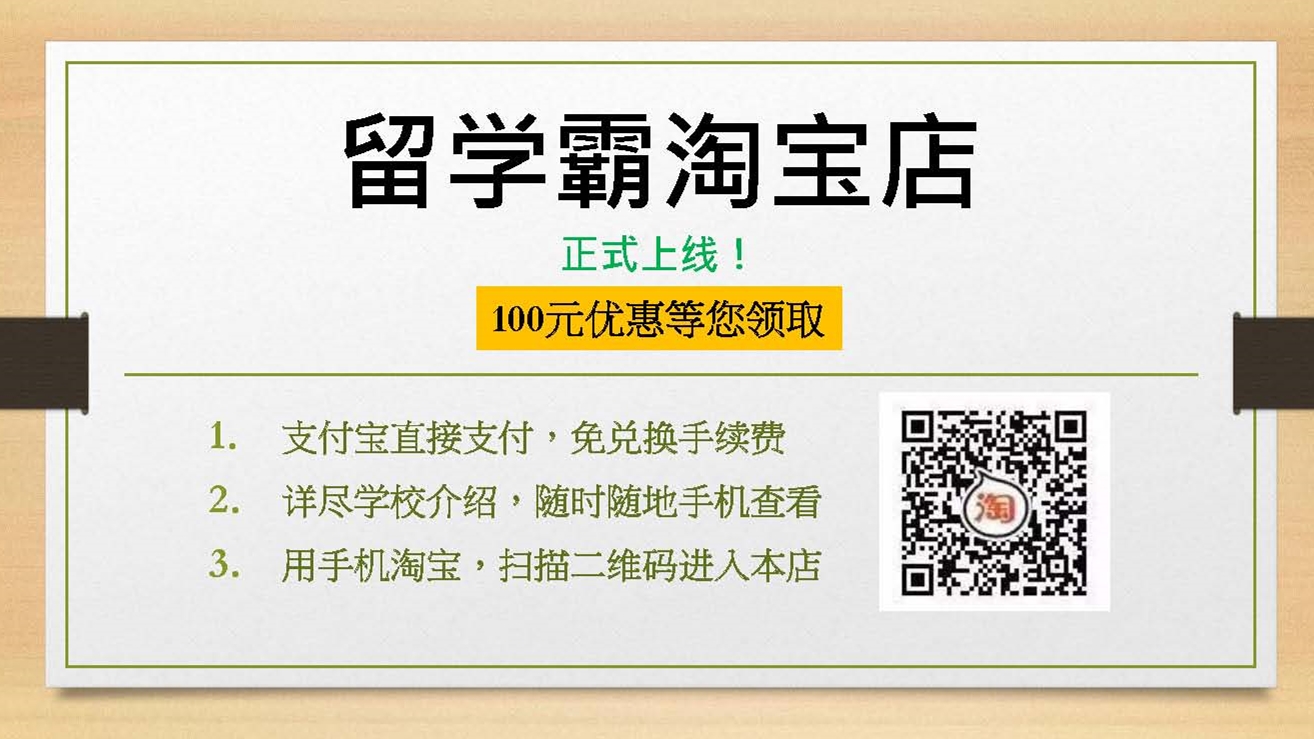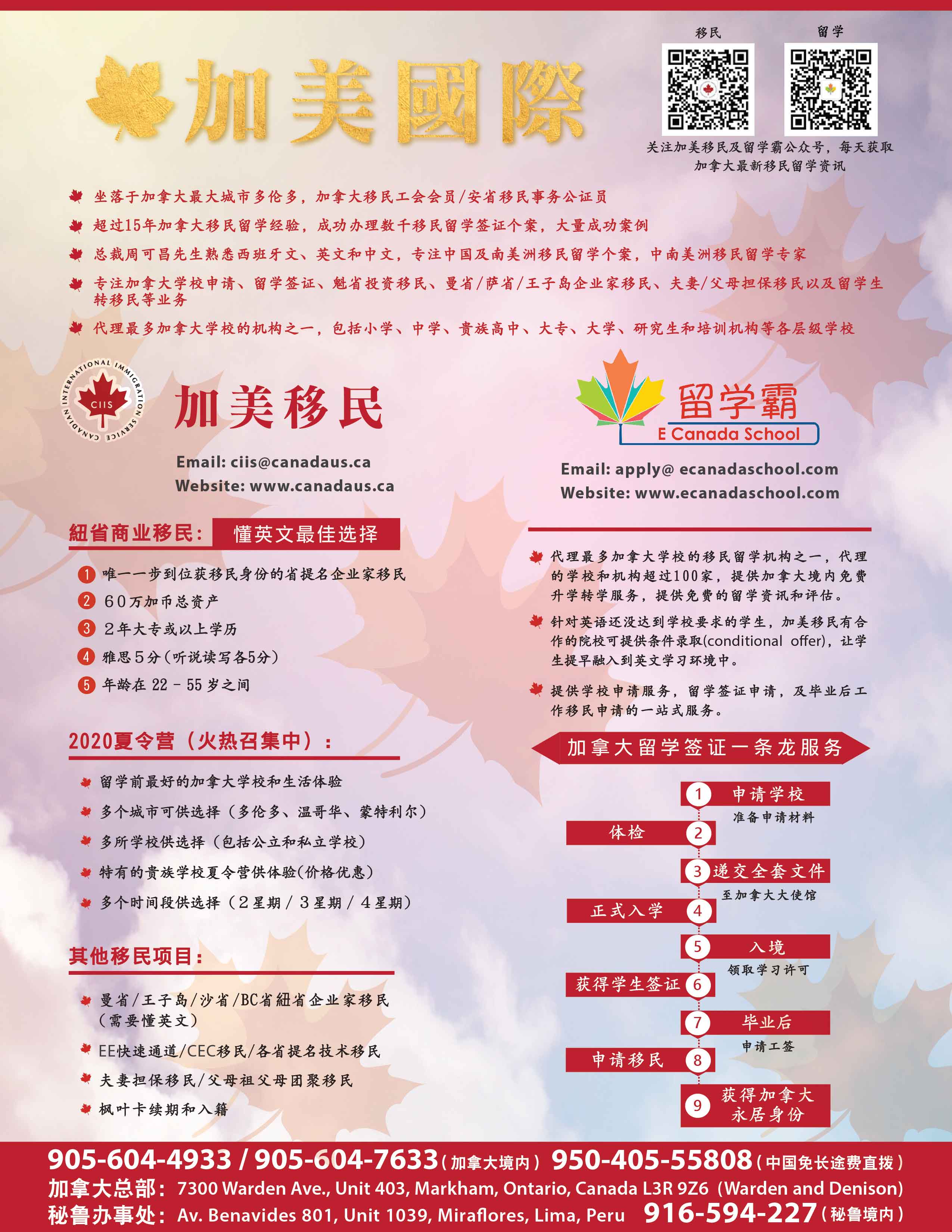Scan



In order to combat the epidemic, each country in the world responded differently according to its own situation and launched different economic stimulus plans. Canada covers an area of 9.98 million square kilometers, with a total population of more than 37 million in 2019, and an estimated GDP of 1.74 trillion US dollars; while the United States covers 9.53 million square kilometers, with a total of 329 million in 2019 and a GDP of 21.439 trillion. Today, we look at the situation and response measures of these two countries under COVID-19.
1) Epidemic situation
Canada
On January 25, Canada confirmed its first case of COVID-19 related to travel to Wuhan, China. 9 The outbreak began in late February. On February 20, Canada confirmed the first case related to travel outside of China, and the first death occurred on March 9. On March 18, Canada imposed a ban on foreign citizens in all countries except the United States, the Canada-US border prohibited all unnecessary travel, and redirected international passenger flights to four airports in Calgary, Vancouver, Toronto, and Montreal. On March 30, the Canadian government stated that all people coming by plane must undergo a health check before boarding. Entering April, on April 2, Canada had more than 10,000 confirmed cases. By April 22, the number of infections was close to 40,000, with more than 1,800 deaths.
According to the worldometers website, as of April 23, there were 42,110 confirmed diagnoses, 2,147 deaths and 14,761 recoveries in Canada.
Quebec has the most confirmed cases, with a total of 20,965 cases and 1,134 deaths. The second is Ontario, with 12,879 confirmed cases and 713 deaths. The third is Albert, with 3,401 confirmed cases and 66 deaths.
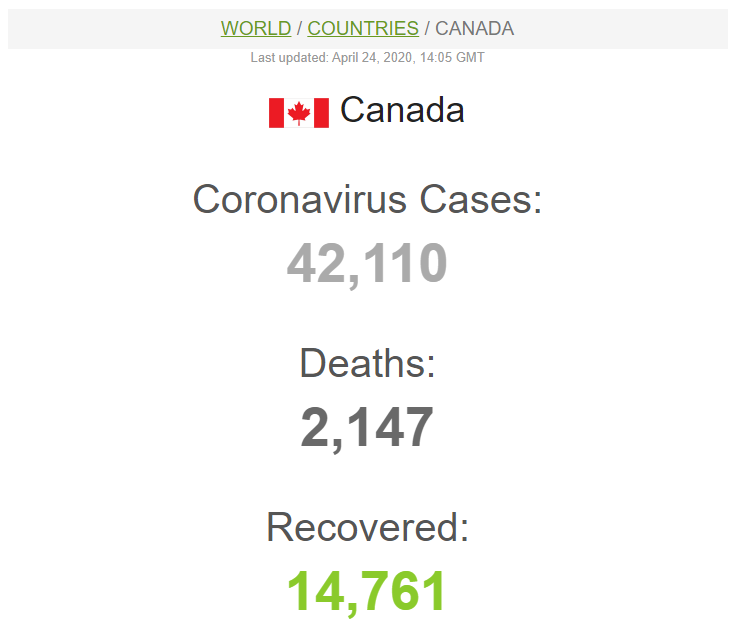

United States
In the United States, the COVID-19 epidemic also began to erupt in about late February. The number of confirmed cases in the United States exceeded 1,000 on March 10. On the evening of March 11th, Eastern Time, President Trump delivered a national television speech, announcing that all travel from Europe (except the United Kingdom) to the United States will be suspended within 30 days from March 13th. On March 14, the United States announced that visitors from the United Kingdom and Ireland were added to the list of prohibited entry.
On March 18, the number of confirmed cases in the United States exceeded 10,000, and it increased rapidly at a rate of 10,000 cases per day in late March. It surpassed mainland China and Italy on March 26 and became the country with the largest number of infections in the world. As of March 18, 21 states in the United States have asked residents to stay at home.
On April 4, the number of diagnoses in the United States exceeded 300,000, and Trump warned at the White House press conference that day that the United States will usher in the most difficult moment of the new coronavirus epidemic in the next two weeks. He also predicted that the number of deaths will be There will be a surge: "Unfortunately," in the next two weeks, "a lot of people will die", "if people do not cooperate with the anti-epidemic measures, more people will die."
As of April 24, there were 887,786 people diagnosed nationwide, 50,295 deaths and 89,143 people recovered.
New York State has the most confirmed cases, with a total of 268,512 cases and 20,792 deaths. The second is New Jersey, with 99,989 confirmed cases and 5,368 deaths. The third is Massachusetts, with 42,944 confirmed cases and 2,182 deaths.
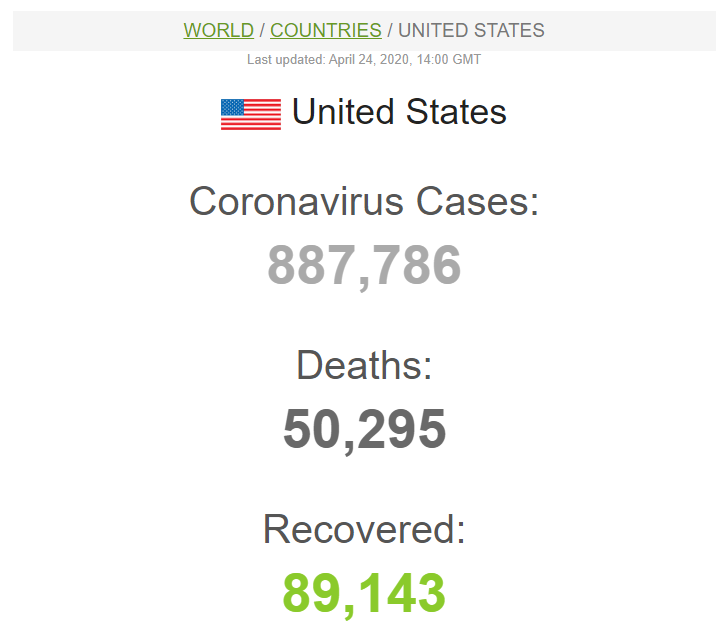

2) Emergency assistance launched by the government during the epidemic
Canada
The Canadian government launched a $ 82 billion anti-epidemic economic plan to help Canadians and businesses respond to COVID-19. The plan includes direct funding of $ 27 billion and tax extension of another $ 55 billion. Measures include:
• For workers who lose their monthly income due to COVID-19, $ 2,000 is issued every four weeks for up to four months. Workers under $ 1,000 can also receive it.
• The newly established Canada Emergency Business Account will fund eligible financial institutions so that they can provide interest-free loans of up to CAD 40,000 to businesses with credit lines of less than CAD 1 million
• Export Development Canada will provide guarantees for financial institutions so that they can issue up to C $ 6.25 million in new operating credit and cash flow term loans to SMEs
• Wage Subsidy Program, equal to 75% of the remuneration paid by qualified employers between March 18, 2020 and June 20, 2020. In other words, each employee receives a maximum of $ 847 in subsidies per week and a maximum of $ 366 in subsidies per month.
• Provide an extra CAD 300 for each child through Canada Child Benefit.
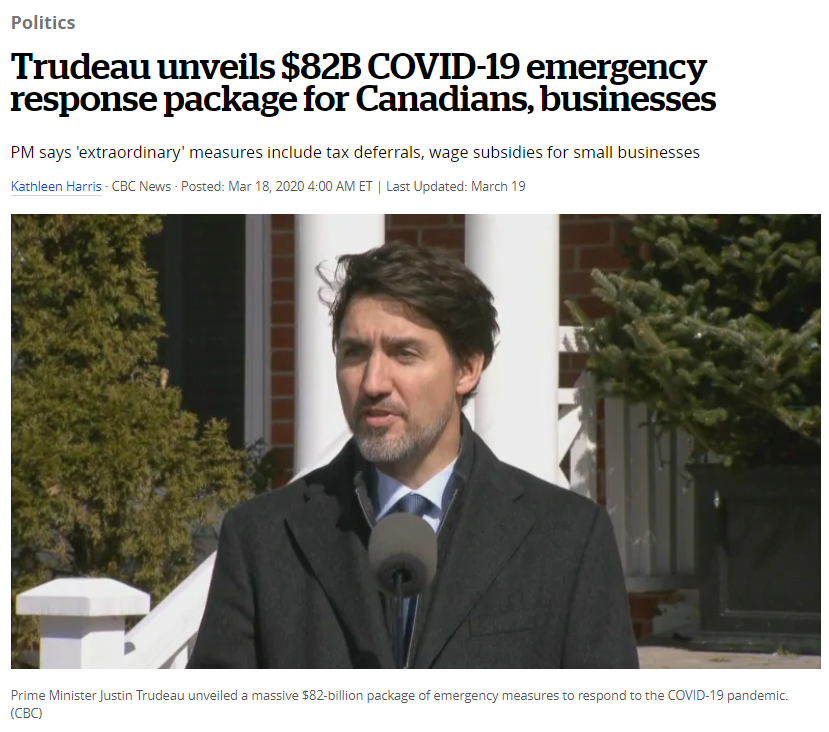
United States
The US government has launched a US $ 2.2 trillion economic plan to fight the epidemic to provide assistance to companies, workers, and healthcare systems affected by coronavirus. Measures include:
• Each person in the list will receive $ 1,200, married couples will receive $ 2,400, and each child under 17 will receive $ 500.
• Expand unemployment insurance to provide unemployed workers with an additional $ 600 for a period of four months. This is the additional benefit they receive on the basis of national benefits. Depending on the state, the average weekly benefit is between $ 200 and $ 550 between. In addition, the government increased deferred benefits for up to 13 weeks. Currently, unemployment inspections in various states last up to 12 to 28 weeks, depending on the state.
• Establish a public health and social emergency fund of US $ 100 billion to reimburse costs and loss of income related to the coronavirus pandemic Others, etc.
• Provided US $ 450 million for emergency food assistance programs, approximately US $ 350 million will be used to purchase additional food, and another US $ 100 million will be used to distribute food, etc.

3) Immigration measures under the epidemic
Canada
1. Measures for temporary residents who are temporarily unable to leave Canada: for visa holders, you can submit an extension application online; if you are a student visa or work permit holder, you can apply for an extension; if you are no longer studying or working, you can Apply to change your identity to a visitor's identity, as long as the study or work permit has not expired. If the visitor record (visitor record), study permit or work permit has expired, and less than 90 days before the expiration; you can apply for restoration of identity. If the visitor records, the student visa or work permit has been more than 90 days, it may be possible to apply for a temporary resident permit, but must explain the reason for staying in Canada when submitting the application.
2. Allow international students to continue their studies and apply for a post-graduation work permit if they switch to online courses: If they are still in isolation or unable to attend classes at the start of the school, students can take online courses. This will not affect students applying for a work permit (PGWP) after graduation.
3. Allow international students to start classes in May and June online: If the applicant will start classes in May and June this year but cannot return to Canada, they can go online in their own country, and can complete no more than 50% online Courses. The new rules also apply to students who get their school visa for the first time and will start classes in May or June.
4. Receiving emergency assistance does not affect the application for family reunification: applying for and receiving the CERB emergency assistance fund launched by the government for the epidemic will not affect the qualification of the sponsor or sponsor of the sponsored immigrant.

United States
Trump announced that he will sign an order to suspend overseas immigration because the New Crown Outbreak is an invisible enemy and must give priority to protecting the employment of American citizens.
"In light of the attack from the invisible enemy, as well as the need to protect the jobs of our GREAT American citizens, I will be signing an Executive Order to temporarily suspend immigration into the United States!" Trump wrote.
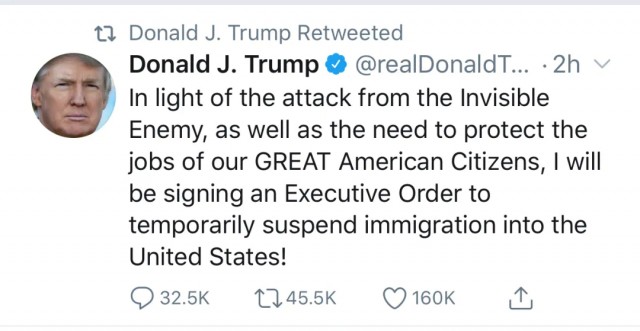
He announced the suspension of the issuance of certain immigration green cards for 60 days to reduce the impact of the coronavirus-damaged economy on American workers. He said:
"To protect American workers, I will be issuing a temporary suspension of immigrating into the United States."
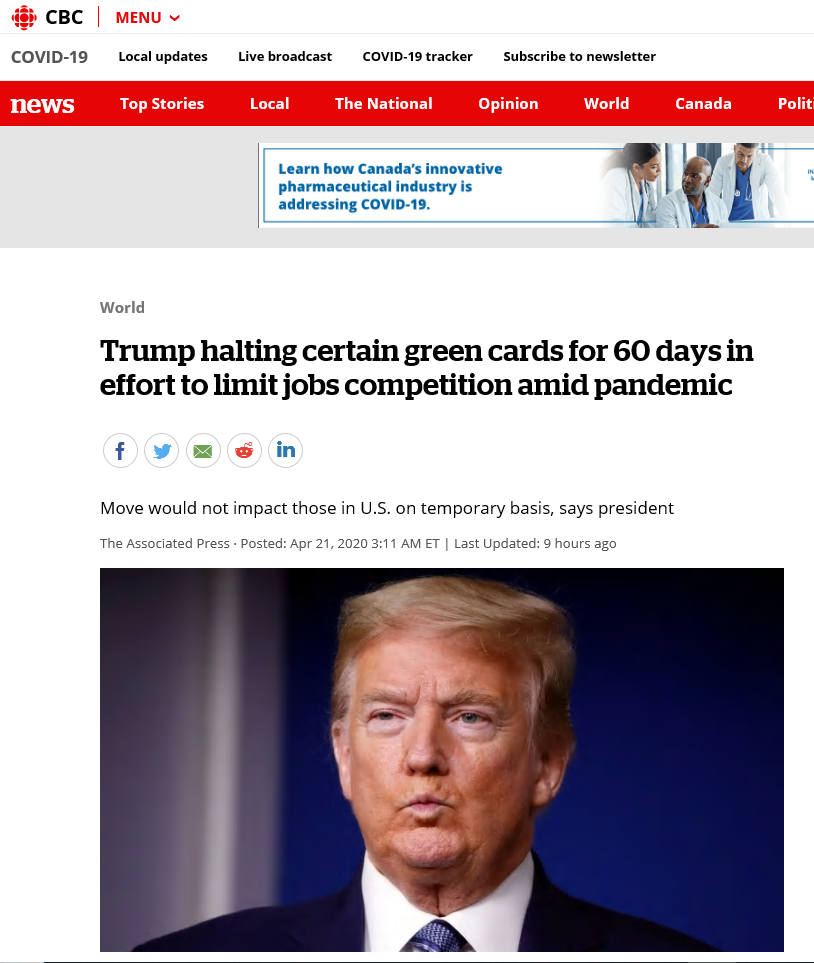
4) Attitude towards China and WHO under the epidemic
Canada
Trudeau did not respond to reporters' inquiries about the attitude toward the WHO and China, stressing that the current focus is on the fight against epidemics.
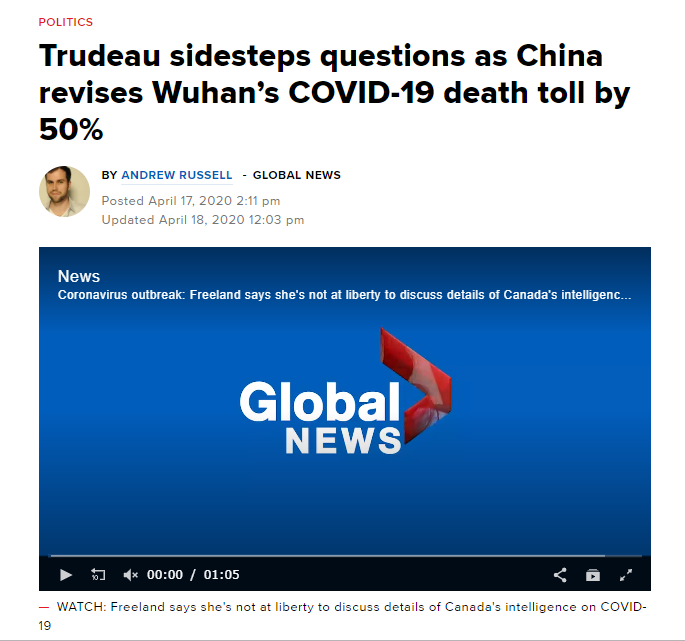
"That is our focus right now-what can we do now, what do we need to do in the coming weeks, how do we lean on experts in international institutions and in partner countries around the world for making recommendations alongside our domestic experts on what we need to do now, "Trudeau said.
He said: "There will be plenty of time to point fingers, to ask questions, to draw conclusion and ensure there are consequences for what countries may have done during this pandemic,"
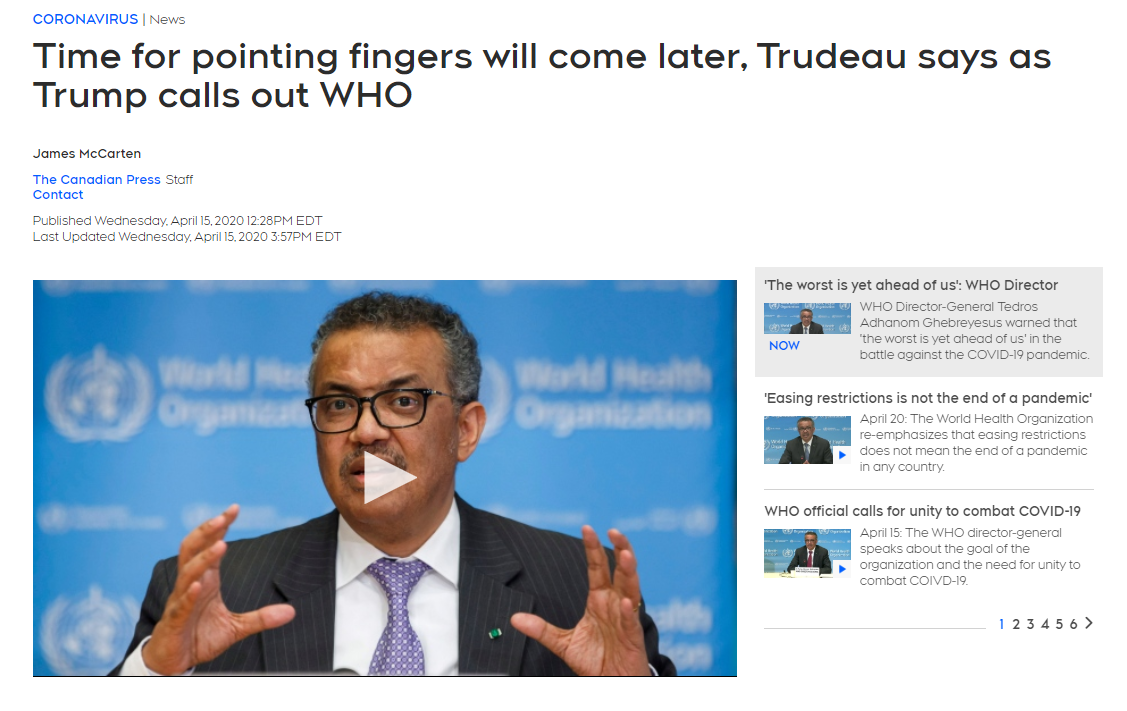
United States
Trump reduced the World Health Organization's (WHO) funding, insisting that the agency be responsible for the "failure" of the Covid-19 crisis, believing that the organization contributed to "Chinese disinformation."
Trump said on April 14: “Today I ’m instructing my administration to halt funding of the World Health Organization while a review is conducted to assess the… organization ’s role in severely mismanaging and covering up the spread of the coronavirus, ”
"WHO failed to investigate reliable reports from Wuhan, which directly conflicted with the official report of the Chinese government."

5) Medical system
Canada
Canada implements a universal medical system. Hospitals are public and there are no private hospitals. The government bears the cost of hospitalization and medical treatment, but does not cover the cost of medicine, which is offset by the purchase of medical insurance by individuals. People under the age of 65 need to pay for their own medicine, and the insurance terms are different. Not all medicines are covered by insurance.
The medical insurance system in each province is different. For international students, general schools will help to purchase provincial medical insurance, and hospitalization and medical expenses are free.
Except that government medical insurance is borne by the government conditionally, major illness medical insurance and extended medical insurance must be borne by themselves. Canada's extended medical insurance is mainly designed for medical expense insurance not covered by government medical insurance. Such as prescription drugs, teeth, physiotherapist, chiropractor, etc. It is divided into personal extended health insurance (Personal health insurance) and group extended medical insurance (Group health insurance) according to different insured service objects.
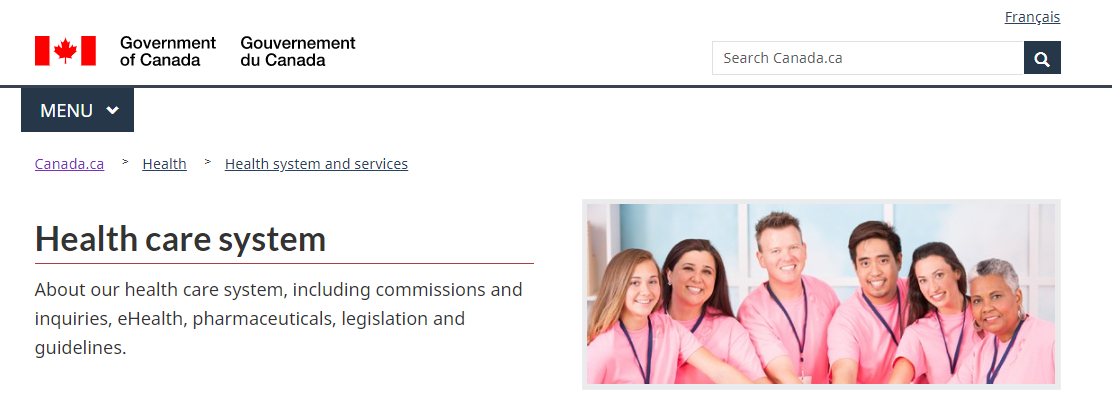
United States
There is no universal health insurance system in the United States, and medical institutions are mainly private in nature. The vast majority of Americans purchase private health insurance (Private Health Insurance) through commercial insurance companies. The US government only provides public health insurance (Public Health Insurance) for special occupations such as the elderly, the poor, government employees, and military personnel.
Each insured person participating in medical insurance must pay insurance premiums regularly. According to different factors such as your age, health status, and insurance coverage. When seeing a doctor, a patient with medical insurance generally only needs to pay the out-of-pocket part of the cost, and the rest is settled directly by the hospital and doctor to the insurance company. Patients without insurance must pay all medical expenses.

